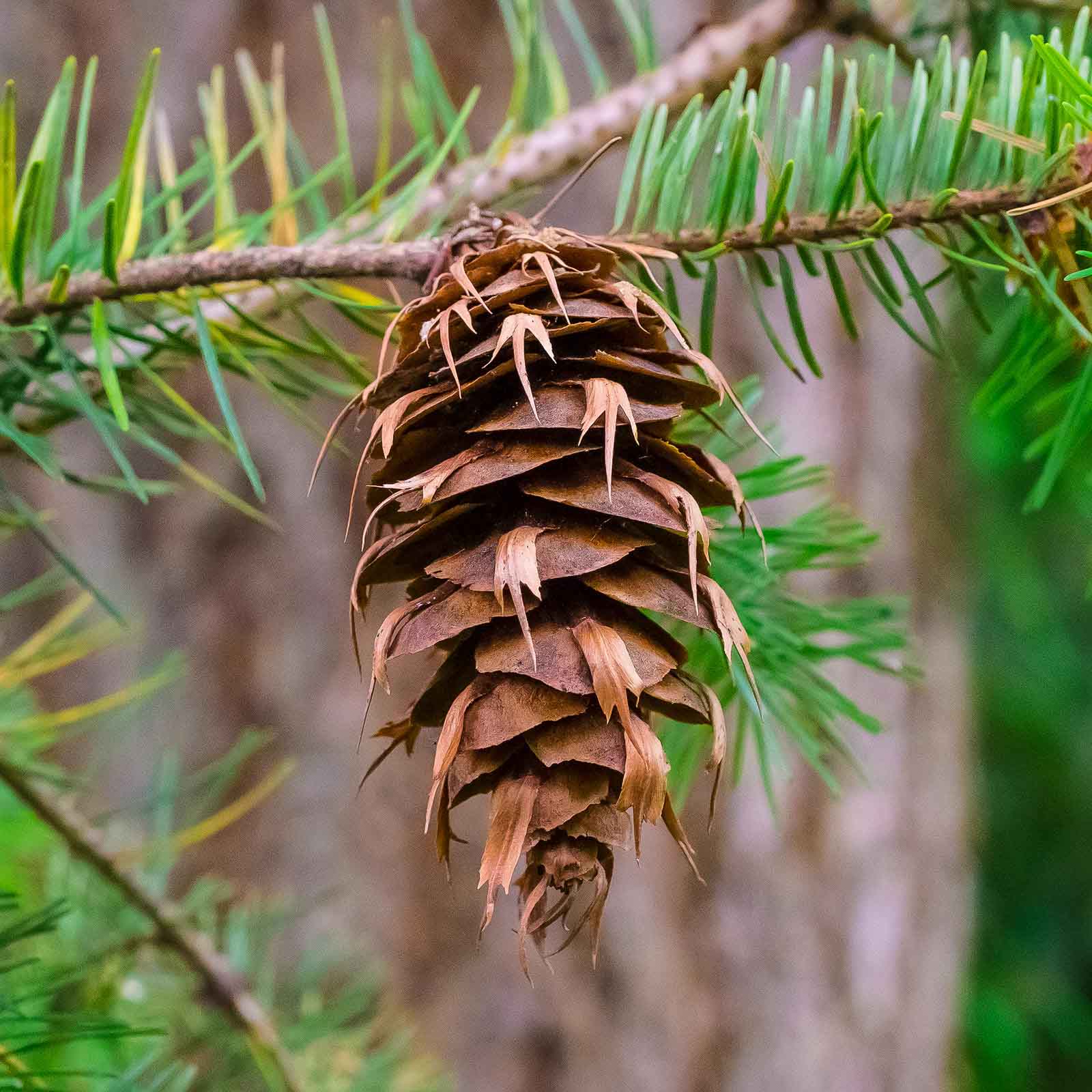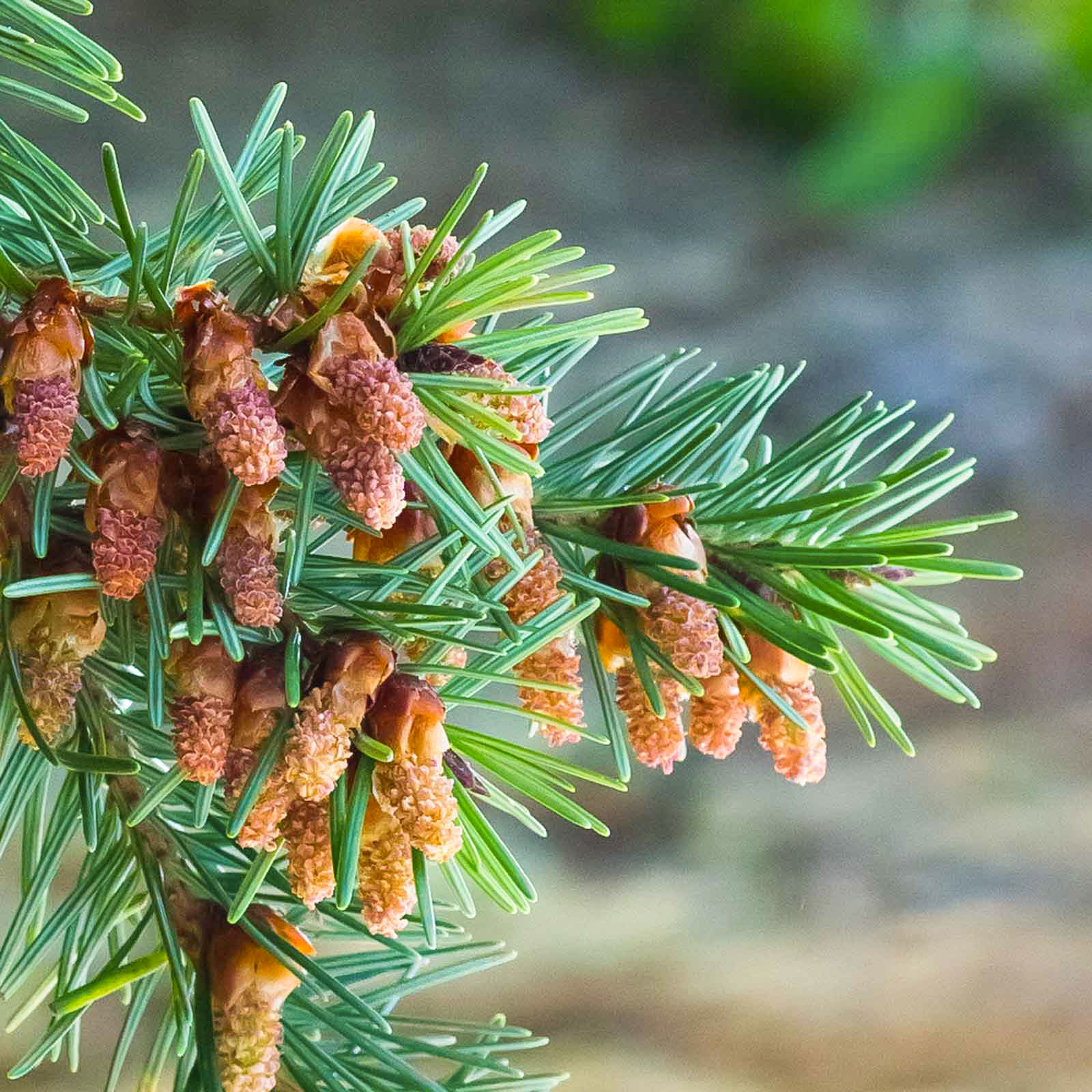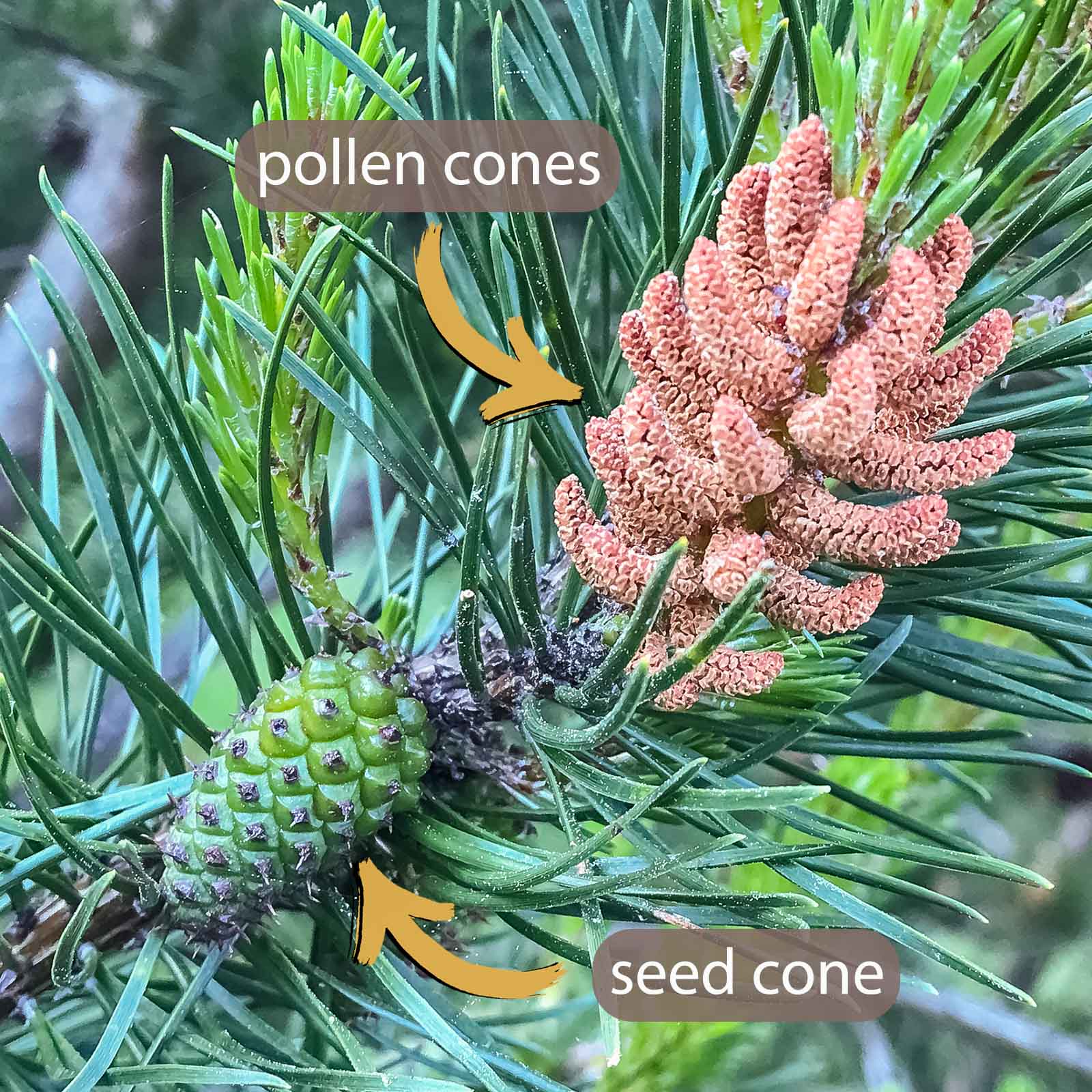There are two types of cones on most Pacific NW conifers: seed cones and pollen cones. These are female and male reproductive organs, respectively.
Pollen (from the pollen cones / male cones) has to reach the ovules (in the seed cones / female cones) in order to fertilize them, creating seeds. Typically, seeds are tucked under the scales of seed cones.
On most but not all conifers of the Pacific NW, pollen cones and seed cones grow on the same tree, in which case the tree is called "monoecious." On some junipers, pollen cones and seed cones do not grow on the same tree, in which case the tree is called "dioecious."
Seed cones are most helpful in identifying a tree because they are durable and stay on the tree or the ground beneath the tree for a long time. Pollen cones, which are usually much smaller and less conspicuous, tend to whither up after releasing their pollen.
Pollen from conifers is typically a fine yellow dust.
Most people refer to seed cones / female cones as just “cones.” Most people are scarcely aware of pollen cones / male cones and may never have noticed them.



